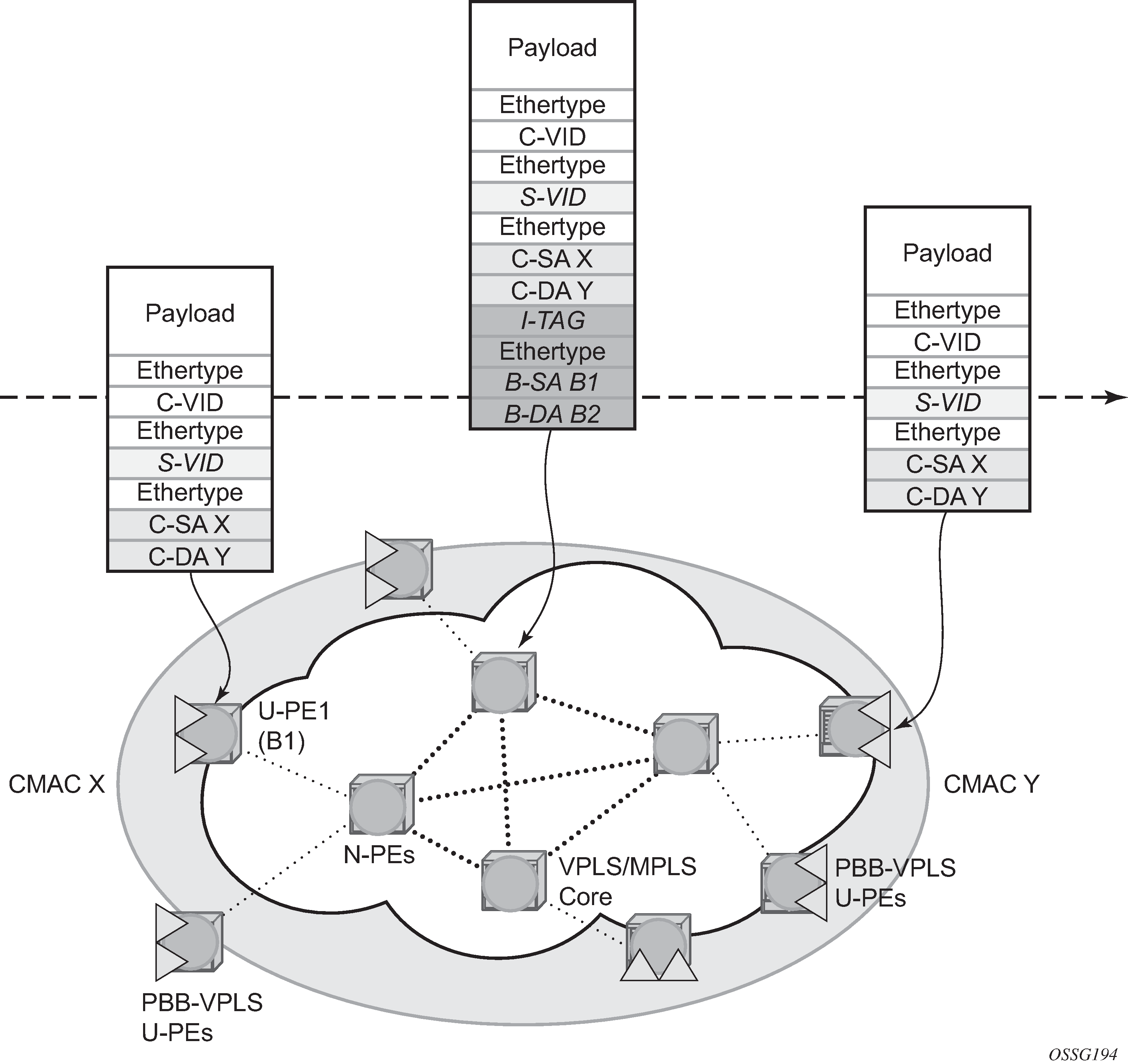This section describes the walkthrough for a packet that traverses the B-VPLS and I-VPLS instances using the example of a unicast frame between two customer stations as depicted in the following network diagram Figure: PBB packet walkthrough.

The station with C-MAC (customer MAC) X wants to send a unicast frame to C-MAC Y through the PBB-VPLS network. A customer frame arriving at PBB-VPLS U-PE1 is encapsulated with the PBB header. The local I-VPLS FDB on U-PE1 is consulted to determine the destination B-MAC of the egress U-PE for C-MAC Y. In our example, B2 is assumed to be known as the B-DA for Y. If C-MAC Y is not present in the U-PE1 forwarding database, the PBB packet is sent in the B-VPLS using the standard group MAC address for the ISID associated with the customer VPN. If the up link to the N-PE is a spoke pseudowire, the related PWE3 encapsulation is added in front of the B-DA.
Next, only the Backbone Header in green is used to switch the frame through the green B-VPLS/VPLS instances in the N-PEs. At the receiving U-PE2, the C-MAC X is learned as being behind B-MAC B1; then the PBB encapsulation is removed and the lookup for C-MAC Y is performed. In the case where a pseudowire is used between N-PE and U-PE2, the pseudowire encapsulation is removed first.